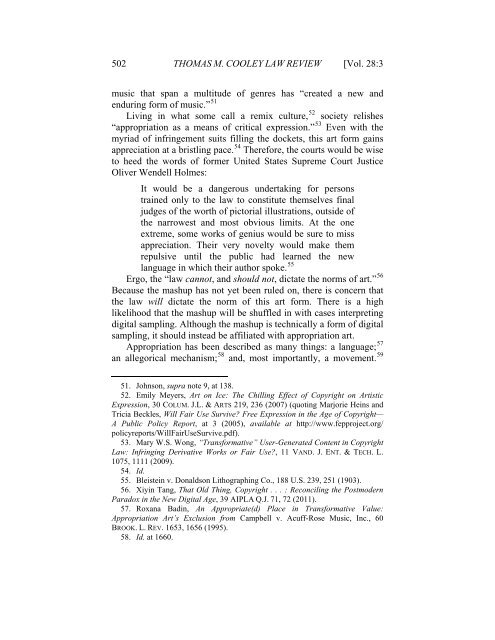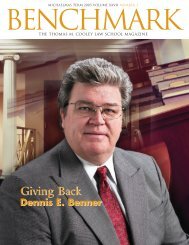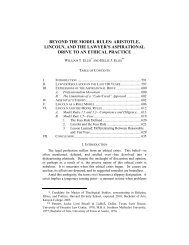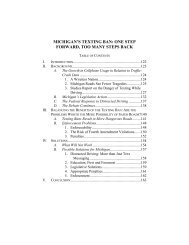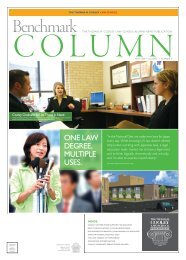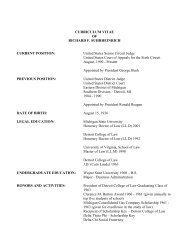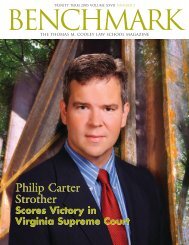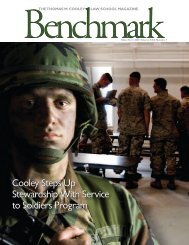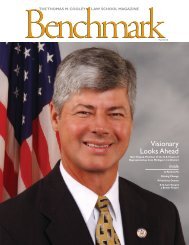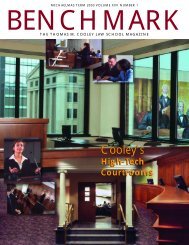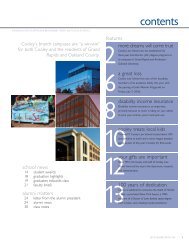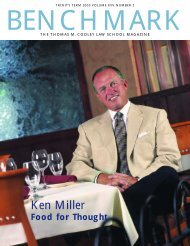Blanch It, Mix It, Mash It - Thomas M. Cooley Law School
Blanch It, Mix It, Mash It - Thomas M. Cooley Law School
Blanch It, Mix It, Mash It - Thomas M. Cooley Law School
You also want an ePaper? Increase the reach of your titles
YUMPU automatically turns print PDFs into web optimized ePapers that Google loves.
502 THOMAS M. COOLEY LAW REVIEW [Vol. 28:3<br />
music that span a multitude of genres has “created a new and<br />
enduring form of music.” 51<br />
Living in what some call a remix culture, 52 society relishes<br />
“appropriation as a means of critical expression.” 53 Even with the<br />
myriad of infringement suits filling the dockets, this art form gains<br />
appreciation at a bristling pace. 54 Therefore, the courts would be wise<br />
to heed the words of former United States Supreme Court Justice<br />
Oliver Wendell Holmes:<br />
<strong>It</strong> would be a dangerous undertaking for persons<br />
trained only to the law to constitute themselves final<br />
judges of the worth of pictorial illustrations, outside of<br />
the narrowest and most obvious limits. At the one<br />
extreme, some works of genius would be sure to miss<br />
appreciation. Their very novelty would make them<br />
repulsive until the public had learned the new<br />
language in which their author spoke. 55<br />
Ergo, the “law cannot, and should not, dictate the norms of art.” 56<br />
Because the mashup has not yet been ruled on, there is concern that<br />
the law will dictate the norm of this art form. There is a high<br />
likelihood that the mashup will be shuffled in with cases interpreting<br />
digital sampling. Although the mashup is technically a form of digital<br />
sampling, it should instead be affiliated with appropriation art.<br />
Appropriation has been described as many things: a language; 57<br />
an allegorical mechanism; 58 and, most importantly, a movement. 59<br />
51. Johnson, supra note 9, at 138.<br />
52. Emily Meyers, Art on Ice: The Chilling Effect of Copyright on Artistic<br />
Expression, 30 COLUM. J.L. & ARTS 219, 236 (2007) (quoting Marjorie Heins and<br />
Tricia Beckles, Will Fair Use Survive? Free Expression in the Age of Copyright—<br />
A Public Policy Report, at 3 (2005), available at http://www.fepproject.org/<br />
policyreports/WillFairUseSurvive.pdf).<br />
53. Mary W.S. Wong, “Transformative” User-Generated Content in Copyright<br />
<strong>Law</strong>: Infringing Derivative Works or Fair Use?, 11 VAND. J. ENT. & TECH. L.<br />
1075, 1111 (2009).<br />
54. Id.<br />
55. Bleistein v. Donaldson Lithographing Co., 188 U.S. 239, 251 (1903).<br />
56. Xiyin Tang, That Old Thing, Copyright . . . : Reconciling the Postmodern<br />
Paradox in the New Digital Age, 39 AIPLA Q.J. 71, 72 (2011).<br />
57. Roxana Badin, An Appropriate(d) Place in Transformative Value:<br />
Appropriation Art’s Exclusion from Campbell v. Acuff-Rose Music, Inc., 60<br />
BROOK. L. REV. 1653, 1656 (1995).<br />
58. Id. at 1660.


